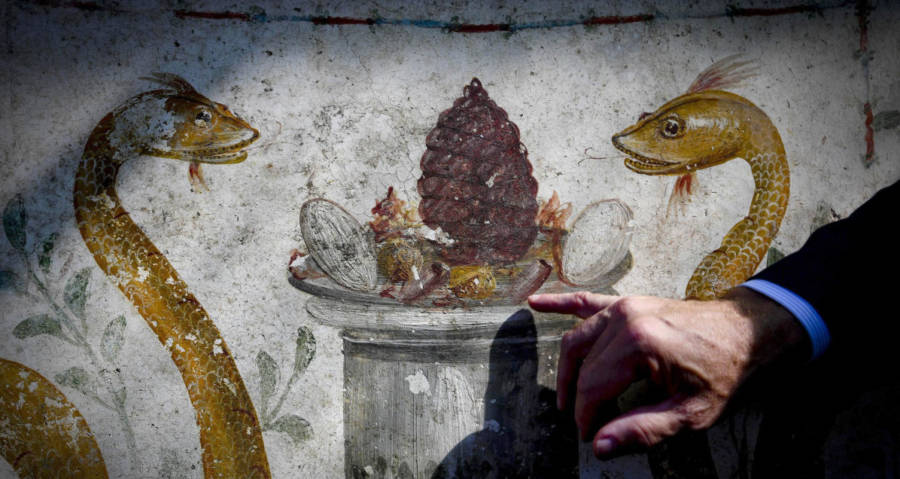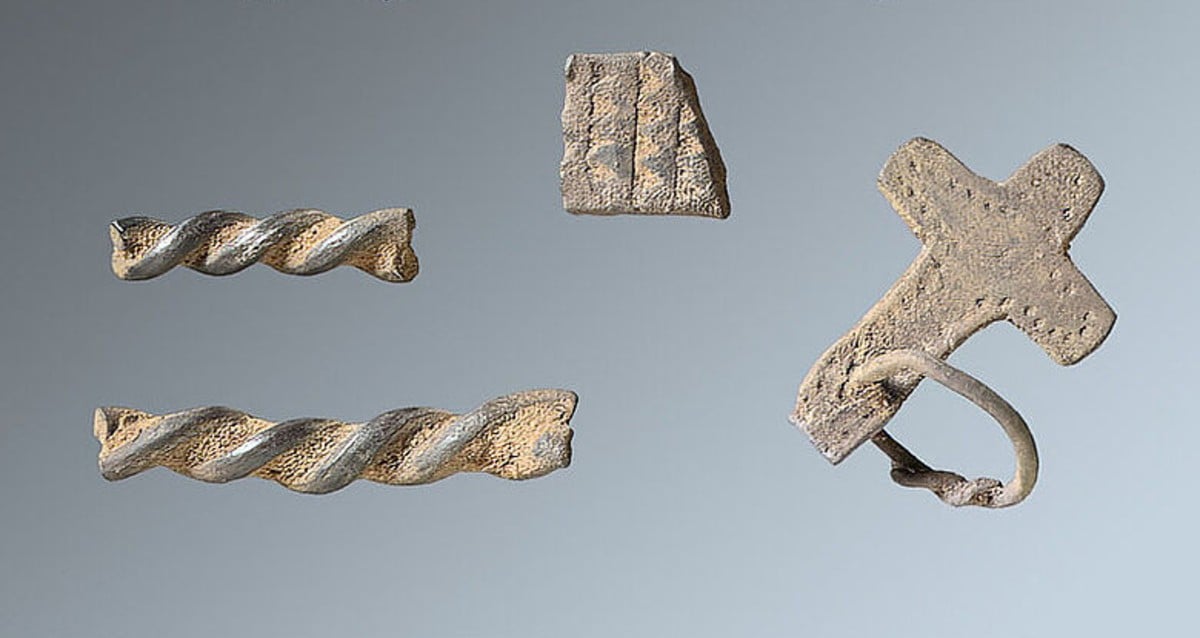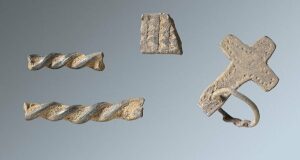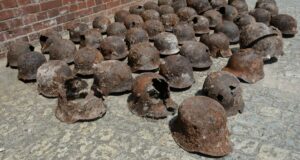Ancient Roman Shrine Hidden for Millennia Emerges from Vesuvius Ash with Secrets Yet Untold

Ciro Fusco/Parco Archeologico di PompeiA snake painting on the lararium.
It is typical of most Roman larariums to show images of snakes, birds, and Gods, as well as symbols of fertility like eggs. Massimo Osanna, the archaeologist leading this excavation, told The New York Times that on the altar just beneath the shrine are remnants of burned offerings that were made to the gods.
The well-preserved nature of this shrine, its murals, and paintings is remarkable when you think about the utter devastation that befell Pompeii nearly 2,000 years ago.
When Mount Vesuvius erupted, the Roman writer Pliny the Younger recorded the disaster in great detail, saying that clouds of rock and gas exploded from the volcano “in the form of a very tall trunk, which spread itself out at the top into a sort of branches,” according to History. The death toll from the eruption is said to have reached as high as 30,000.
Many of the people of Pompeii and the surrounding cities were killed instantly by Vesuvius’ deadly volcanic flow and because of the extreme heat, were frozen in time. Lucky for archaeologists, the same thing that took Pompeii down is exactly what has allowed them to make stunning discoveries such as this.
Next, take a look at these agonizing photos of Pompeii’s bodies frozen in time. Then discover why ancient Pompeii porn holds the key to greater LGBT acceptance, according to one reverend.














Post Comment